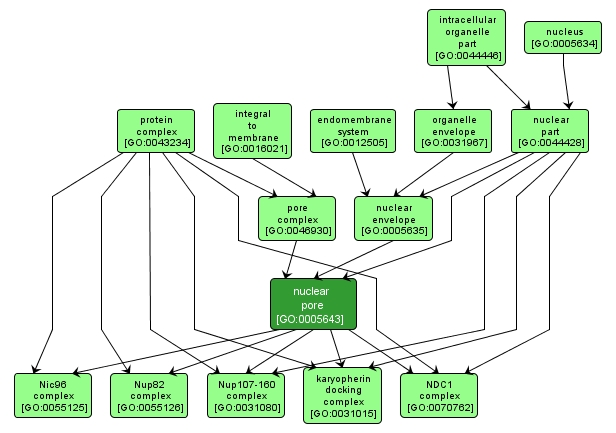GO TERM SUMMARY
|
| Name: |
nuclear pore |
| Acc: |
GO:0005643 |
| Aspect: |
Cellular Component |
| Desc: |
Any of the numerous similar discrete openings in the nuclear envelope of a eukaryotic cell, where the inner and outer nuclear membranes are joined. |
Synonyms:
- NPC
- nuclear pore membrane protein
- nuclear pore complex
- GO:0005644
|
|

|
INTERACTIVE GO GRAPH
|














